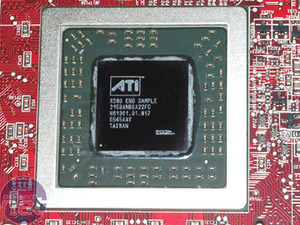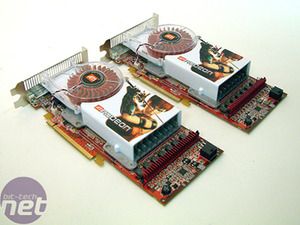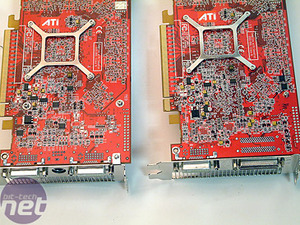Radeon X1900-series reference cards:
At a first glance, you would be right to think that the Radeon X1900XTX reference card is physically the same as the Radeon X1800XT reference card. All in all, there are three cards that currently make up the Radeon X1900-series; they are Radeon X1900XTX, X1900XT and X1900 CrossFire Edition.



The flagship Radeon X1900XTX comes clocked at 650/1550MHz, while the slightly cheaper Radeon X1900XT comes clocked at 625/1450MHz. The cooler remains the same as the one that was included on the Radeon X1800XT and it's generally reasonably quiet, but not as quiet as the coolers on NVIDIA's GeForce 7800 GTX and 7800 GTX 512 cards.
The fan is a variable speed design, however we didn't notice it spin up above its normal, rather quiet setting during our gaming evaluations. However, the noise seemed to incease a little when a Radeon X1900XTX and Radeon X1900 CrossFire Edition card were placed together in CrossFire mode.
Speaking of CrossFire, there are some very subtle differences between the standard Radeon X1900-series cards and the Radeon X1900 CrossFire Edition card. The cards look pretty much the same on first inspection and you'd be troubled to spot the difference between the two from the angle we've photographed them at in the isometric image.
However, there are some distinct differences in the circuitry on the back of the card in order to make the CrossFire function work.. There is also the connector where the CrossFire cable connects the two cards together along with the lack of a VIVO connector too. They aren't the only differences though, as there are some subtle differences that can't be seen when the heatsink is still attached to the video card.

MSI MPG Velox 100R Chassis Review
October 14 2021 | 15:04









Want to comment? Please log in.